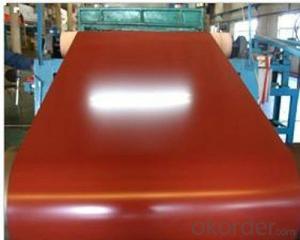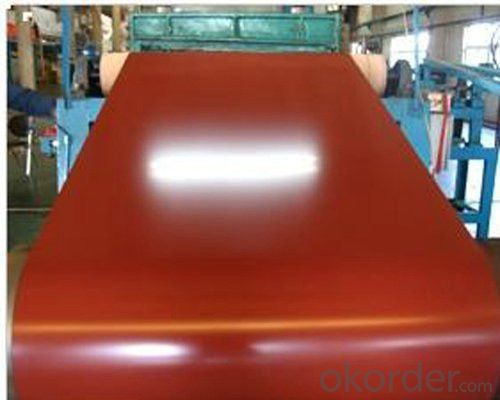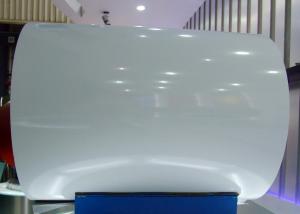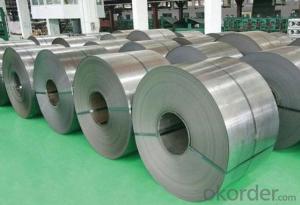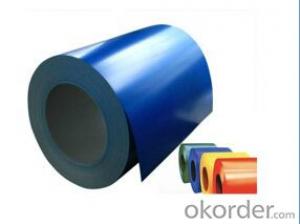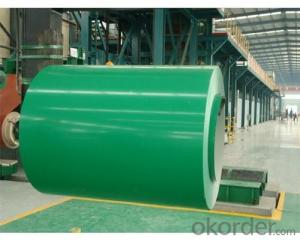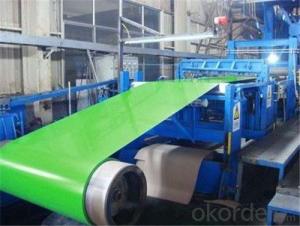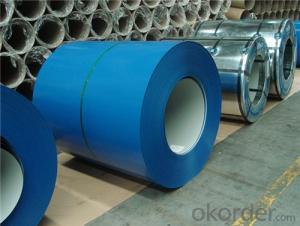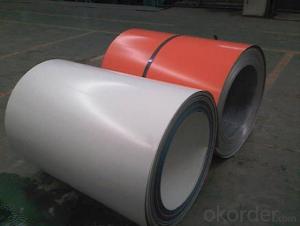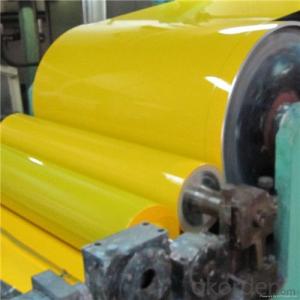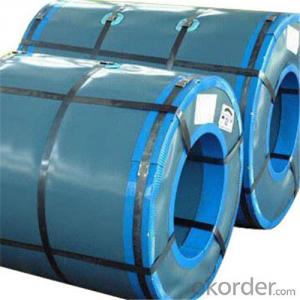Pre-painted rolled Steel Coil for Construction Roofing Constrution
- Loading Port:
- Tianjin
- Payment Terms:
- TT OR LC
- Min Order Qty:
- 25 m.t.
- Supply Capability:
- 25 m.t./month
OKorder Service Pledge
OKorder Financial Service
You Might Also Like
Structure of Prepainted Rolled steel Coil for Construction Roofing

Description of Prepainted Rolled steel Coil for Construction Roofing
Prepainted Rolled steel Coil is a kind of coated steel coil/sheet. With the cold rolled steel of different strength and thickness as substrate, it is produced through applying Al-Zn coat on both faces by hot dip process. In its coating, Al accounts for about 55%, Si 1.6%, while the remaining is Zn. Aluminum zinc coils enjoys both the physical protective feature and durability of Al and the electrochemical protective property of Zn. And its surface has bright silver color and regular embossed-like figure, which are highly decorative.
Main Feature of Prepainted Rolled steel Coil for Construction Roofing
1.Corrosion resistance: It mainly depends on the aluminum protection. When the zinc being worn, the aluminum will form a dense layer of aluminum oxide, resist corrosion material to prevent further corrosion inside.
2. Heat resistance: Aluminum zinc alloy steel sheet has excellent heat resistance, can withstand high temperatures over 300 centigrade, and is similar with aluminized steel high temperature oxidation resistance. It often used in chimney pipes, ovens, fluorescent lighting device and the device cover.
3. Heat reflective: Galvanized steel plate heat-reflective high rate is twice as galvanized steel, often used to make insulation materials.
4. Economy: Because density of 55% AL-Zn is smaller than the density of Zn, so in the same weight and thickness of Galvanized zinc layer, aluminum-zinc steel plate is larger area more than 3% of galvanized steel sheet.
Applications of Prepainted Rolled steel Coil for Construction Roofing
1. Construction and building: roofing; ventilating duct; handrail; partition panel;etc.
2. Electric appliance: refrigerator; washing machine; refrigerator; DVD;etc.
3.Transportation: oil tank; road sign; etc.
4.Agriculture:barn; etc.
5.Others:vending machine; game machine; etc.
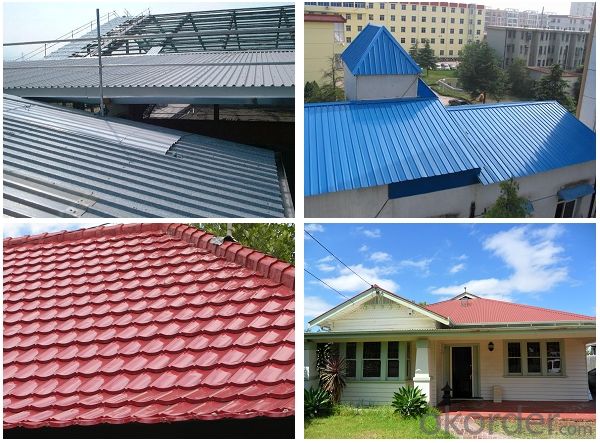
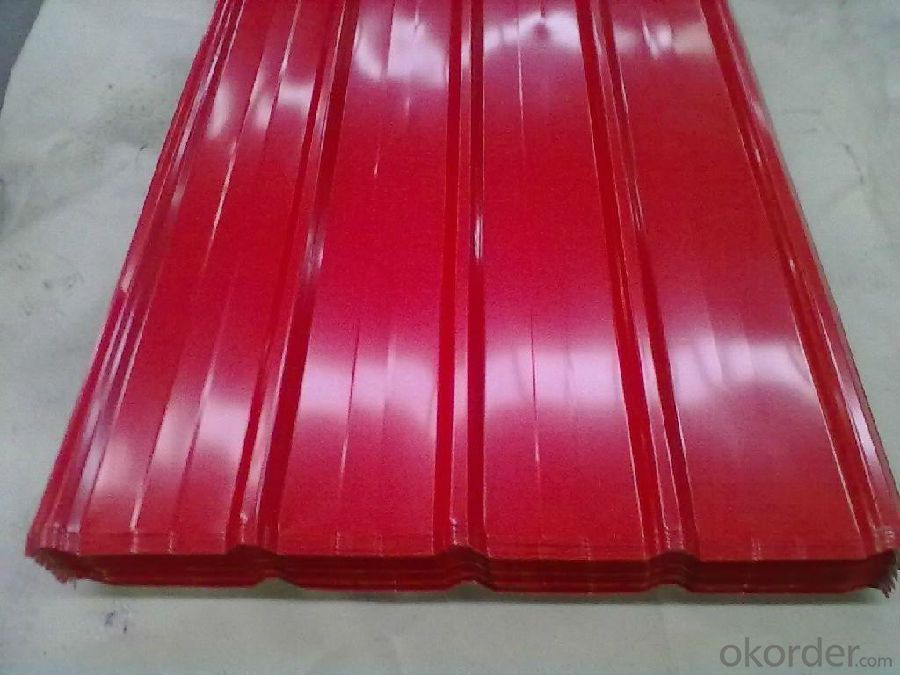
Specifications of Rolled steel Coil for Construction Roofing
Product | Prepainted Rolled steel Coil for Construction Roofing |
Material Grade | SGCC / SGCH / DX51D+AZ, etc |
Thickness | 0.2-3.0mm |
Width | 600-1500mm |
Tolerance | Thickness: +/-0.02mm , Width:+/-2mm |
Zinc-coating | AZ40-150g/m2 |
Technique | Raw material: Hot rolled steel coil --> Cold rolled_>hot dipped galvalume |
Surface | Dried, Chromated, Unoiled |
Spangle | Regular spangle , small spangle, zero spangle |
ID | 508MM |
Coil weight | 10MT max |
Export package | Cardboard inner sleeves, Waterproof paper, galvanized steel covered and steel strip packed |
FAQ of Prepainted Rolled steel Coil for Construction Roofing
We have organized several common questions for our clients,may help you sincerely:
1. What is the minimum order quantity ?
Our MOQ is 50mt for each size. And we will consider to give more discount if you make big order like 1000 tons and more. Further more, the more appropriate payment term your offer the better price we can provide.
2. How long can we receive the product after purchase?
Usually within thirty working days after receiving buyer’s advance payment or LC. We will arrange the factory manufacturing as soon as possible. The cargo readiness usually takes 15-25 days, but the shipment will depend on the vessel situation.
3. How to guarantee the quality of the products?
We have established the international advanced quality management system,every link from raw material to final product we have strict quality test;We resolutely put an end to unqualified products flowing into the market. At the same time, we will provide necessary follow-up service assurance.
- Q: How does the thickness of a steel coil affect its applications?
- The thickness of a steel coil affects its applications by determining its strength, durability, and versatility. Thicker steel coils are typically stronger and more resistant to bending or deformation, making them suitable for heavy-duty applications such as construction projects, automotive manufacturing, and infrastructure development. Thinner steel coils, on the other hand, are more flexible and easier to shape, making them ideal for applications that require intricate designs or a lightweight material, such as in the production of electronics, household appliances, or packaging materials. Ultimately, the thickness of a steel coil plays a crucial role in determining its suitability for specific applications based on the desired strength, flexibility, and weight requirements.
- Q: What are the cost implications of using steel coils in manufacturing?
- The cost implications of using steel coils in manufacturing can vary depending on several factors. Firstly, the price of steel coils themselves can fluctuate due to market conditions, supply and demand, and global trade policies. Additionally, the cost of transporting and storing steel coils can add to the overall expenses. Furthermore, the manufacturing process may require additional equipment or specialized machinery to handle and process steel coils, which can impact the overall production costs. However, steel coils are often considered a cost-effective option in manufacturing due to their durability, versatility, and recyclability, which can contribute to long-term savings and environmental benefits.
- Q: What are the different types of welding used for steel coils?
- There are several types of welding processes used for steel coils, including MIG (metal inert gas) welding, TIG (tungsten inert gas) welding, and submerged arc welding. MIG welding is commonly used for its speed and efficiency, while TIG welding is preferred when a higher level of precision is required. Submerged arc welding is often used for thicker steel coils as it provides deep penetration and high deposition rates.
- Q: How are steel coils made?
- Steel coils are made through a process called hot rolling, where steel slabs are heated and passed through a series of rollers to reduce their thickness and increase their length. These coils are then cooled and coiled into large rolls, ready for use in various industries such as automotive, construction, and manufacturing.
- Q: What other metal is used to make rings? My girlfriend is allergic to stainless steel, but she wears a silver/grayish color ring, but I'm not sure what metal it is. Any ideas? Thanks!
- silver, white gold, and platinum match the color of stainless steel the best. they last long, too ;)
- Q: what do you think about producebility of low density steel? for example: can density of 1020 steel (or ony others) be decreased without any loss of other properties.
- 1. A method has been developed for magnetic phase analysis of Fermanal type alloys as-quenched and after aging. 2. The upper limit of alloying to ensure the optimal mechanical properties was determined more precisely for steel 9G28Yu9MVB. For rods aged at 550°C for 16 h the aluminum content should not exceed 9.2% and the carbon content 0.92%. 3. To ensure the optimal mechanical properties of the deformed metal it is necessary to obtain a fine-grained single-phase austenitic structure after quenching. The amount of hardening phase after quenching should not exceed 15–20% (saturation magnetization around 1600 G).
- Q: What are the different methods of coil recoiling for narrow strip widths?
- There are several different methods of coil recoiling for narrow strip widths. One method is known as slitting and recoiling, which involves cutting the wide coil into narrower strips and then rewinding them onto a smaller coil. This is typically done using a slitting machine, which can make precise cuts to create the desired strip widths. Another method is known as edge trimming and recoiling. In this process, the edges of the wide coil are trimmed to create narrower strips, and then the remaining material is rewound onto a smaller coil. This method is often used when the edges of the coil are damaged or uneven and need to be removed before recoiling. Additionally, there is a method called tension recoiling. In this process, the wide coil is passed through a series of tensioning devices that help to create the desired strip widths. The tensioning devices can apply controlled pressure to the edges of the coil, allowing for precise recoiling of narrow strips. Furthermore, some companies use laser cutting technology for coil recoiling. This method involves using a laser beam to cut the wide coil into narrow strips, followed by rewinding onto a smaller coil. Laser cutting offers high precision and accuracy, making it an ideal option for narrow strip widths. Overall, the different methods of coil recoiling for narrow strip widths include slitting and recoiling, edge trimming and recoiling, tension recoiling, and laser cutting. Each method has its own advantages and is chosen based on the specific requirements and capabilities of the manufacturing process.
- Q: How are steel coils used in the production of elevator components?
- Steel coils are an essential component in the production of elevator components. These coils are made from high-quality steel that is specifically designed to meet the demanding requirements of elevator manufacturing. One of the primary uses of steel coils in elevator production is for the manufacturing of elevator doors. The coils are processed into flat sheets and then cut into the desired dimensions to create the doors. These doors require strength and durability to withstand frequent use and ensure passenger safety. Steel coils provide the necessary structural integrity and resistance to deformation that is necessary for elevator doors. Additionally, steel coils are also used in the manufacturing of elevator cabins. The coils are processed and formed into various shapes to create the walls and flooring of the elevator cabins. The strength and rigidity of steel make it an ideal material for this purpose, as it can withstand heavy loads and provide a secure and stable environment for passengers. Moreover, steel coils are used in the production of elevator shafts. The coils are rolled into cylindrical shapes and welded together to create the structural framework of the elevator shafts. These shafts need to be strong and rigid to support the weight of the elevator and ensure smooth and safe vertical movement. Steel coils provide the necessary strength, stability, and load-bearing capacity for this critical component of elevator systems. In summary, steel coils are vital in the production of elevator components such as doors, cabins, and shafts. Their strength, durability, and versatility make them suitable for creating reliable and safe elevator systems that can transport passengers efficiently and securely.
- Q: How are steel coils used in the manufacturing of construction materials?
- Steel coils are used in the manufacturing of construction materials as they are processed and shaped into various components such as beams, columns, and reinforcement bars. These coils are unwound and fed into machines that cut, bend, and mold them into the required shapes, ensuring the strength and durability of the construction materials.
- Q: What are the trends and developments in the steel coil industry?
- Over the past few years, the steel coil industry has undergone various trends and developments. These changes have been influenced by different factors, including advancements in technology, shifts in supply and demand, and concerns for the environment. One notable trend in the steel coil industry is the increasing utilization of advanced technologies in production. Automation and robotics have revolutionized the manufacturing process of steel coils, resulting in improved efficiency and quality control. These technologies have also enabled the industry to meet the rising demand for customized steel coils by allowing faster and more precise production. Another trend in the industry is the move towards lightweight and high-strength steel coils. With the increasing need for fuel-efficient vehicles, manufacturers are seeking lighter materials that still possess strength and durability. Steel coil producers are developing innovative products, such as advanced high-strength steels and ultra-high-strength steels, that meet these requirements. These materials offer enhanced performance while reducing the weight of the final product. Concerns for the environment have also spurred developments in the steel coil industry. There is a growing demand for sustainable and eco-friendly steel coils, leading to the adoption of greener manufacturing processes. Steel coil manufacturers are increasingly incorporating recycled materials and implementing energy-efficient technologies to reduce carbon emissions and waste generation. Additionally, there is a focus on improving the recyclability of steel coils to minimize their environmental impact throughout their lifecycle. Furthermore, the steel coil industry is experiencing a shift in the dynamics of supply and demand. Emerging economies, particularly in Asia, are driving the demand for steel coils due to rapid industrialization and urbanization. As a result, there have been increased investments in production capacity in these regions. Conversely, developed economies are witnessing a trend towards consolidation and specialization, with some companies focusing on niche markets or specific applications for steel coils. Overall, the steel coil industry is undergoing significant transformations that are being driven by advancements in technology, changing demand patterns, and environmental concerns. These trends and developments are reshaping the industry, making it more efficient, sustainable, and adaptable to the evolving needs of the market.
Send your message to us
Pre-painted rolled Steel Coil for Construction Roofing Constrution
- Loading Port:
- Tianjin
- Payment Terms:
- TT OR LC
- Min Order Qty:
- 25 m.t.
- Supply Capability:
- 25 m.t./month
OKorder Service Pledge
OKorder Financial Service
Similar products
Hot products
Hot Searches
Related keywords
